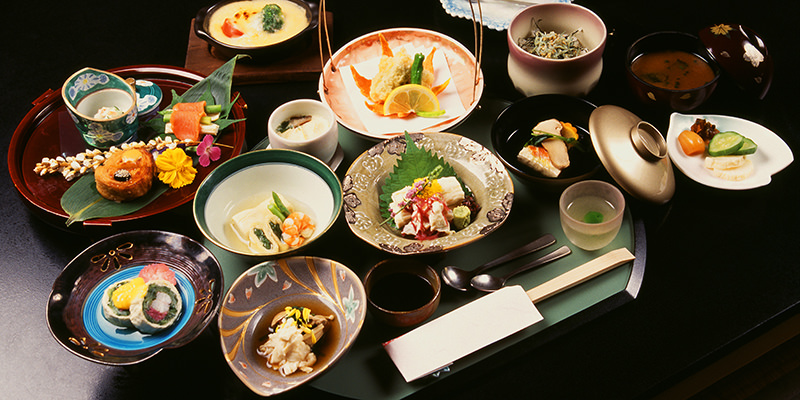There are many things we’re getting wrong about Japanese culture. Foremost, probably stop buying sushi at a supermarket or drug store. And don’t mix the wasabi into the soy sauce. (Yeah, we do it, too.)
One thing to get right about Japanese culture—Kaiseki. Learn it, love it (it’s inevitable), live it. And then, ideally, pair some alcohol with it.
If you remember anything about karate or karaoke, beyond Laura’s weirdly erotic rendition of Shake It Off at last year’s office Christmas party, you’ll know that those words both have a prefix—“kara,” meaning “empty.” “Te” basically means hand, and “oke” is the prefix for the Japanese word for “orchestra.” Empty hand, empty orchestra, fully awesome articulation of the general human experience. Kaiseki is similar, insofar as you can break it down—kai, meaning “robe,” and “seki” meaning “stones.”
Sounds less fun than you’d like, but bear with us. The literal translation is something along the lines of “stones in the stomach,” or “bosom pocket stone,” referring to the way monks would ward off hunger. (There’s also a translation, likely derived later, that means “formal occasion.”) However you translate it, the larger sense of kaiseki has nothing to do with eating gravel, or even abstaining from worldly pleasures. In fact, there is a version of “shojin” kaiseki which imitates the purity of what monks would eat (they were vegetarian, by the way), and it’s impossibly gratifying. But generally speaking, kaiseki has come to mean a formal, multi-course, hyper-seasonal meal. Not unlike something you’d find at a high-end restaurant (while you’re staring through the window from outside…other people do that, right?).
So here’s why you should be hosting a kaiseki party: not to overburden you with work; yes, a “succession of small seasonal plates” sounds annoying and you love that new pizza place that just opened up. But if you’re a dinner party thrower, kaiseki is exactly up your alley—all about expression (every kaiseki meal is different, and if you’re a cook, you know all about your specific strengths, ability to burn garlic, etc.). Then there’s the exciting culinary perspective, which is basically all about letting seasonal (ideally local) produce guide you through your menu. Yes, culinary nerd points abound. But for a good cause.
Not that you’ll have to come up with a succession of dishes—the traditional kaiseki meal is extremely elaborate, but also extremely particular, with specific dish preparations from course to course, e.g. “soup,” “simmered,” “grilled,” etc.).
Another none too subtle reason to host a kaiseki party: the booze. Kaiseki is about the product, the seasons, and expressing love and technique, maybe over 15 courses (or 10 if you’re feeling lazy). But if you throw a kaiseki dinner party of, say, eight courses, you can easily request a BYOB from each guest per course. Let them know the dish they’ll be pairing with and sit back and wait for the free, and no doubt interesting, alcohol to pour in.
Not just because you’re gunning for free alcohol, of course. Despite the number of courses, a kaiseki meal isn’t about excess. Ironically—for a meal among Japan’s most expensive and most elaborate—it’s about particularity. Expression in abundance, the way Thomas Keller might serve you a carrot and then you go home and stare in the mirror and rethink everything you knew about carrots. All of this is to say, when your friends hear the term “kaiseki,” they will spend a ton of time finding a great bottle of wine or sake or beer to go with what you’re serving up. Which, by the way, would go along the lines of something like this.

